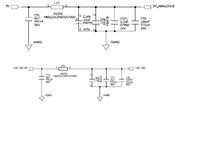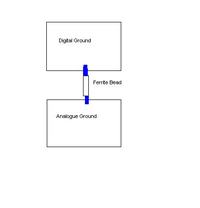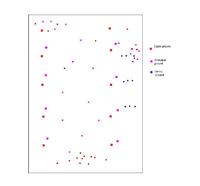sreejithpdas
Newbie level 6

Hi,
I am a newcomer in RF board design. The analog signal on the board is of 2.4GHz. I am using 1.8V dc supply to the board. Do I need to split my ground plane so as to provide return current path to the analog signal, which then gets separated from the return path of dc current? Is it dangerous to use a single ground plane from an EMI perspective?
Thanks in advance,
Sreejith
I am a newcomer in RF board design. The analog signal on the board is of 2.4GHz. I am using 1.8V dc supply to the board. Do I need to split my ground plane so as to provide return current path to the analog signal, which then gets separated from the return path of dc current? Is it dangerous to use a single ground plane from an EMI perspective?
Thanks in advance,
Sreejith






